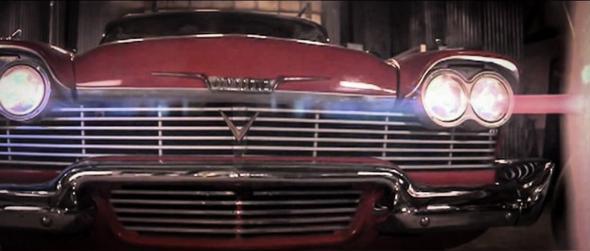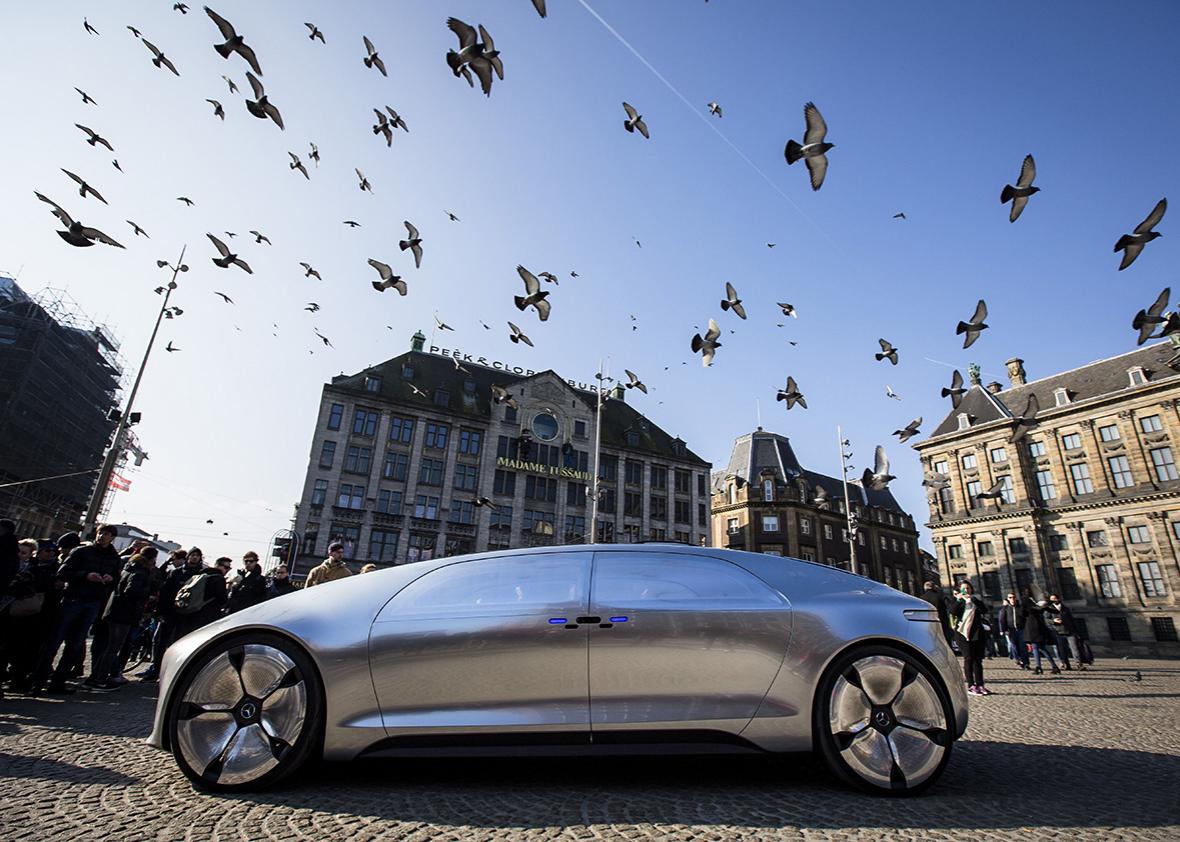Key Players:
Anthony Foxx: As secretary of the U.S. Department of Transportation, Foxx has helped push for regulations that would bring more self-driving vehicles to the road.
Chris Gerdes: Gerdes, a Stanford University mechanical engineering professor, has worked to improve self-driving cars by investigating the brain activity of racecar drivers.
Anthony Levandowski: A former Google engineer, Levandowski recently launched Otto, a company that aims to automate big rig trucks.
Gary Marcus: Marcus, a professor of psychology at New York University, has investigated the moral ramifications of self-driving vehicles and other autonomous technologies.
Elon Musk: Tesla Motors, one of Musk’s companies, has been at the forefront of mass-market self-driving technology.
Sebastian Thrun: While working at Google, Thrun directed a team that developed a self-driving car known as Stanley that won the won the Defense Advanced Research Projects Agency’s 2005 Grand Challenge.
Debates:
Autonomy loss: Cars are deeply connected to our understanding of independence, but that may fade when we lose control of their systems. Will ceding control of our vehicles presage a broader loss of autonomy?
Hackability: Virtually all of the connected devices in the so-called internet of things have proved to be hackable, and cars will likely be no exception. What happens when and if malicious actors start messing with vehicles that we can no longer control manually?
Liability: In theory, self-driving cars will grow safer and safer as they become more advanced, but who will be at fault when they inevitably do get into accidents or go haywire? Will their passengers, their manufacturers, or someone else altogether be at fault?
Mass unemployment: For now, prototype self-driving cars still require a human behind the wheel, but the truly autonomous vehicles of the future threaten to displace millions of taxi operators, delivery people, and others. Will the advantages of self-driving vehicles make up for their human costs?
Regulation: Though there are local regulations here and there, we’ve yet to develop coherent national—let alone international—standards for autonomous vehicle technology. Can legislatures keep pace with fast-advancing technology?
Safety concerns: Fully self-driving vehicles should be able to handle themselves well, but partially autonomous may simply make us more incautious. Will the coming decades of superadvanced cruise control make us even more likely to text and drive?
Read Up:
“Auto Correct,” by Burkhard Bilger: In this New Yorker piece, Bilger offers a richly reported account of where self-driving vehicles stand now, focusing especially on Google’s efforts.
The Glass Cage, by Nicholas Carr: Skeptical but never cynical for cynicism’s sake, Carr delves into the dangers of automation more generally. Critically, he also offers a handful of proposals for the development of more human-centered technology.
The Master Algorithm, by Pedro Domingos: If you really want to understand self-driving cars, it helps to understand the software that helps pilot them. Though it doesn’t focus on autonomous vehicles in particular, this accessible volume offers a useful guide to the workings of machine learning algorithms.
“The Paradox of the Self-Driving Car,” by Will Oremus: Having tried out the self-driving capacities of a Tesla Model S, Slate’s Oremus worries that some of these features may actually be making us less safe.
“Say Hello to Stanley,” by Joshua Davis: Though self-driving technology has advanced rapidly, this 2006 article captures a crucial moment in that process, the period between the first and second DARPA Grand Challenges, in which researchers had to build cars that could race through the desert by themselves.
“The Trick That Makes Google’s Self-Driving Cars Work,” by Alexis C. Madrigal: Madrigal throws a little cold water on the supposed power of Google’s self-driving cars, which can cruise around Mountain View, California, on their own. He shows that the company’s vehicles are effectively operating in a meticulously modeled digital double of their environs, one that would take time to reproduce elsewhere.

Popular Culture:
Christine, by Stephen King: The malicious car in this novel by King—for whom monstrous vehicles are a recurring theme—may not be artificially intelligent, but it still speaks to fears about self-driving technology.
Imperial Earth, by Arthur C. Clarke: In the future world that Clarke imagines in this 1976 novel, it’s a crime for a human to manually operate a car on public roads.
Knight Rider: This quintessential 1980s television series featured a crime fighting, self-aware Pontiac Firebird Trans Am.
Maximum Overdrive, directed by Stephen King: When machines begin to come to life, few prove to be more dangerous than a group of demonic big rigs.
Minority Report, directed by Steven Spielberg: In this prescient science fiction film, cars cruise smoothly along the highways, independent of their ostensible operators’ control.
Lingo:
Adaptive automation: Systems governed by adaptive automation allow human users to maintain primary control but attempt to contribute in ways that complement the user’s focus and mood, for example by taking over steering if biometric sensors indicate that a driver is especially anxious.
Crawling: Crawling would involve laboriously mapping roads in a way that makes them intelligible to autonomous vehicles.
Fleet turnover: The point at which all or most older vehicles have disappeared from roads and a new automotive technology truly takes hold.
Smart roads: Smart road infrastructure would feed information to, and otherwise regulate, autonomous vehicles driving over it, alerting them to changing traffic lights or helping them maintain proper distance from one another, for example.
Machine learning: Machine-learning algorithms modify their programming, making it easier to automatically improve the performance of self-driving vehicles.
Semi-autonomous: Unlike truly self-driving vehicles, semi-autonomous systems only control some elements of a vehicle’s behavior, like by easing collision avoidance or contributing to parallel parking.
This article is part of the driverless cars installment of Futurography, a series in which Future Tense introduces readers to the technologies that will define tomorrow. Each month from January through June 2016, we’ll choose a new technology and break it down. Read more from Futurography on driverless cars:
Future Tense is a collaboration among Arizona State University, New America, and Slate. To get the latest from Futurography in your inbox, sign up for the weekly Future Tense newsletter.
